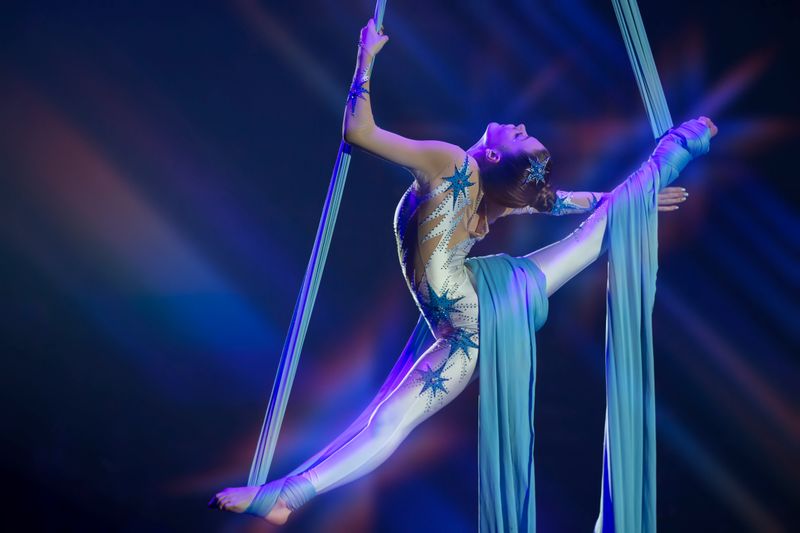
The Aerial Dancer Visa


Nick Nason is a solicitor at Edgewater Legal who frequently provides advice to clients applying under the Global Talent immigration route. Below, Nick details how aerial dancing might qualify.
If you are recognised as an exceptionally talented aerial dancer, or one who demonstrates exceptional promise, you may be able to apply for a UK visa.
To qualify, you must have been professionally engaged in performing outstanding aerial dance in at least 2 countries within the last 5 years. However, if you’re at an early stage in your career, you need to show a developing track record in one country.
Visa outline
Global Talent visas enable you to live and work in the UK for a duration of your choosing – up to 5 years – and they are pathways to settlement (and British citizenship after that).
Before you can apply for the visa, you must first be endorsed by Arts Council England. To do this, you complete an online form and provide evidence in support, demonstrating how you meet their criteria.
If Arts Council England agree that you show Exceptional Promise or have Exceptional Talent, you can then apply for the visa itself.
Those endorsed as having Exceptional Talent may be able to apply for accelerated settlement after only 3 years. Those showing Exceptional Promise (at an early stage in their career) are usually eligible after 5 years.
The main criteria
You need three dated letters of recommendation. Two of these must be from well-established organisations that you work(ed) with, also considered to be experts within their field (aerial dance), with at least one of them being based in the UK.
Your third letter must be from another leading organisation within aerial dance, or an individual you have worked with, with recognised experience in that field.
If you are an Exceptional Talent, you must also be able to evidence two of the following:
- Two or more examples significant media recognition (individually or as a contribution to a group) from at least two countries
- Winning, or significantly contributing to winning, at least one international award for excellence
- Proof of professional performances considered internationally significant within the field of aerial dance
If you show Exceptional Promise, you will need to show how you meet two of the following:
- Two examples of recent media recognition for your work as an individual, or as a named member of a group or as a contributor
- Winning, or significantly contributing to winning, or significantly contributing to being nominated or shortlisted for, or being nominated or shortlisted for, at least one international award for excellence
- Professional performances recognised within aerial dance
In both cases, you will need to provide your CV, setting out your career to date.
What is significant media recognition?
This would usually be detailed independent critiques, reviews or critical evaluations of your individual work, from credible arts and culture critics in internationally recognised and well-established media outlets, in at least two countries.
Recognised media outlets include newspapers, magazines, television, radio or websites.
For those endorsed as having Exceptional Promise, blogs are acceptable if they are written by credible arts and culture critics, are prominent and sufficiently well-established, and have a significant number of reviews available.
Evidence from blogs and social media will not be accepted for those relying on Exceptional Talent.
Whatever the media recognition, it must have been received within the five years preceding the application date, and must be for work that had already taken place at the time of publication.
Further guidance on exactly what is considered as ‘significant media recognition’ is provided by Arts Council England, and this should certainly be reviewed before you apply.
What counts as an international award?
For those with Exceptional Talent, you need award wins; for those with Exceptional Promise, reliance on nominations is allowed.
There is no specific list of qualifying awards but the award win (or nomination) should have taken place within the last 5 years.
It should also provide significant recognition of your status as a leader (or emerging leader) within the field of aerial dance.
If you have not won (or been nominated for) an award as an individual, you can provide evidence of having made a significant contribution to an award win (or nomination) by another individual or group you worked with instead. If you intend to do this, you will need to include a supporting document detailing the significant contribution you made to the work that won the award. This must be from the individual that won (or was nominated), or from a senior person that has responsibility for the group that won (or was nominated).
What can be provided as proof of performances?
This could include programmes, adverts, posters, or listings for past events in which you took part.
You are allowed to submit videos or photographs as long as you also submit supporting information verifying your participation, along with when and where the engagement took place. Videos or photographs alone will not be sufficient.
Arts Council England guidance sets out further information as to the kind of evidence that you may wish to provide.
If you are looking for further information or assistance regarding this visa then please do not hesitate to contact us at Edgewater Legal.